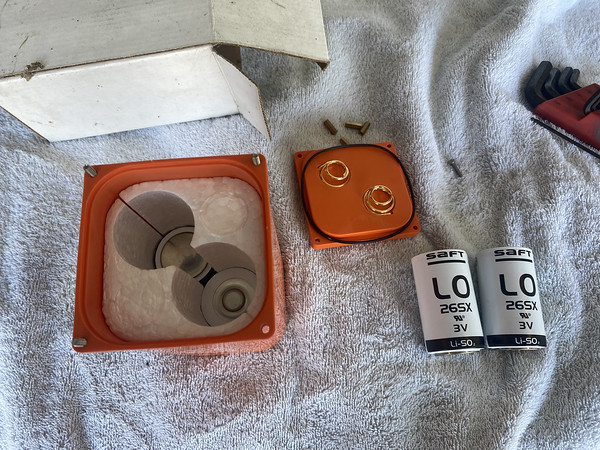(Not sure where this post should go...)
Many of us upgraded our ACK E-01 ELTs to E-04 models for the 406 MHz. While the E-01 ELT used inexpensive Duracell D-size batteries, the E-04 uses a full pack replacement that costs $273 at AS&S.
at AS&S.
After replacing mine recently, I decided to disassemble the old pack to see what was inside, even though there is a clear warning on the pack not to do so. Here is what I found: The E-04 battery pack contains 4 easily extractable, button-top (unsoldered) SAFT LO26SX 3V 7750 mAh Lithium-Sulfur Dioxide D-size cells, in a robust foam carrier.
Here is what I found: The E-04 battery pack contains 4 easily extractable, button-top (unsoldered) SAFT LO26SX 3V 7750 mAh Lithium-Sulfur Dioxide D-size cells, in a robust foam carrier.
These SAFT (the brand name) batteries are readily found on-line in the range of $16-$25. If you believe that as operator of an experimental aircraft you are not bound by the warning, when your pack is due you could save >$150 by doing the swap yourself.
If so, you should be sure to get the fresh batteries from a high-traffic dealer, as they have a long but limited life. Also, be sure to take your used-up batteries back to said dealer for recycling, as they should not be disposed of in regular trash.
FWIW,
Andy Elliott
Many of us upgraded our ACK E-01 ELTs to E-04 models for the 406 MHz. While the E-01 ELT used inexpensive Duracell D-size batteries, the E-04 uses a full pack replacement that costs $273
After replacing mine recently, I decided to disassemble the old pack to see what was inside, even though there is a clear warning on the pack not to do so.
These SAFT (the brand name) batteries are readily found on-line in the range of $16-$25. If you believe that as operator of an experimental aircraft you are not bound by the warning, when your pack is due you could save >$150 by doing the swap yourself.
If so, you should be sure to get the fresh batteries from a high-traffic dealer, as they have a long but limited life. Also, be sure to take your used-up batteries back to said dealer for recycling, as they should not be disposed of in regular trash.
FWIW,
Andy Elliott





